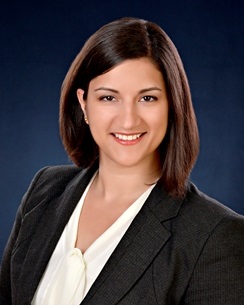- Home
- About Us
- The Team / Contact Us
- Books and Resources
- Privacy Policy
- Nonprofit Employer of Choice Award

 The Income Tax Act requires every registered charity (including organizations, private foundations, and public foundations) to meet a disbursement quota every year or risk losing its registration. Of the various structures that can hold charitable registration, trusts may face particular obstacles in meeting their quota.
The Income Tax Act requires every registered charity (including organizations, private foundations, and public foundations) to meet a disbursement quota every year or risk losing its registration. Of the various structures that can hold charitable registration, trusts may face particular obstacles in meeting their quota.
How the quota works
The disbursement quota is the minimum amount a charity is required to spend each year on its own charitable activities or on gifts to qualified donees. The annual quota is currently calculated as 3.5 per cent of the average value over the last 24 months of all of the charity's investment property, assuming this value exceeds $100,000 (or $25,000 in the case of private or public foundations). Investment property is any property not used directly in charitable activities or administration such as real estate, account balances, stocks, bonds, etc.
If a charity spends more than its quota in a given year, the excess can be carried forward five years or back one year. This means that where a charity falls short of its quota in a year, it can make up for it by drawing on excess from any of the five previous fiscal periods, or it can try to spend enough the following year to create an excess to carry back. These are important safeguards to be aware of since, as we mentioned, failure to meet quota can result in revocation of registered charity status.
The trouble with trusts
With most charitable structures, directors have considerable freedom in decision making or at least are able to appeal to the members for changes or permissions. Trustees, on the other hand, are bound fast to the terms of the charitable trust they curate when the settlor is not available for consultation (for example, in the common case of trusts settled by will). If the trust terms do not allow the trustees to dip into the capital of the trust, the trustees will find themselves in a quandary in any year in which the trust does not have sufficient income to meet its disbursement quota.
This problem is nicely encapsulated in the recent case of Fenton Estate (2014 BCSC 39). The deceased established a charitable trust in his will to support the elderly. The trust provided that the capital was to be held in perpetuity, with the net annual income distributed to appropriate beneficiaries. Generally, of course, trustees have a duty to invest capital prudently so as to ensure reasonable investment returns. But the world is unpredictable, and even a prudent investor can face difficult circumstances. The Fenton trustee suffered under the weight of historically low rates of return on investment, and eventually the annual income was not sufficient to meet the 3.5 per cent quota. The trustee was thus presented with a dilemma: risk the trust's registration by failing to meet the disbursement quota, or risk the trust's registration by breaking with its terms and encroaching on the trust capital. To make matters worse, the trust was also a private foundation, making its disbursement quota more onerous than that of a charitable organization.
The trustee addressed the problem by applying to the Supreme Court of British Columbia for an order allowing partial use of the capital to meet the quota. The Court found that the trust's objects had become impossible to attain as a result of the circumstances and used its discretionary power to go a step further; authorizing the trustee to encroach on capital gains in any year in which it would be necessary to do so to meet the disbursement quota.
Obviously, trustees do not want to be in a position where they must undertake court proceedings to fix such a problem. The CRA does allow charities to apply for a retroactive reduction to a previous year's disbursement quota if the shortfall was beyond the charity's control. However, they will only grant the reduction if they are satisfied the charity has exhausted all other means of addressing it, including attempting to create a surplus in the following year to be carried back. This means that the charity must go at least an entire year with the unmet quota hanging over its head before it can even apply. Fenton does not discuss whether the trustee tried this tack, but given how time consuming the process is and that (if successful) it is only a one-time fix to a potentially recurring problem, we would understand if the trustee chose to forego it.
The lesson we can take from Fenton is that the terms of a charitable trust should not bind the trustees so tightly that they cannot ensure the trust is able to meet its disbursement obligations. Some forethought in the planning stages can spare the trust a great deal of trouble and expense down the road.